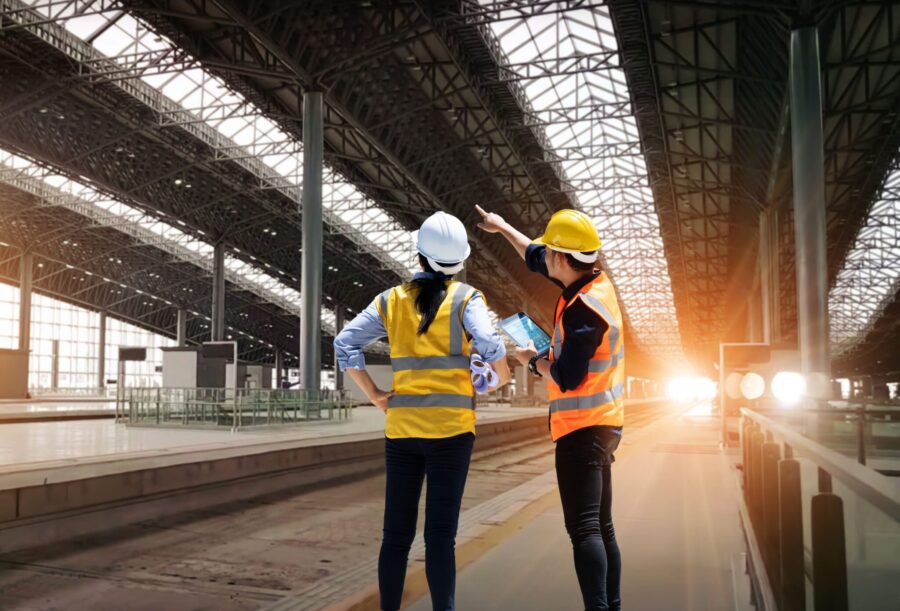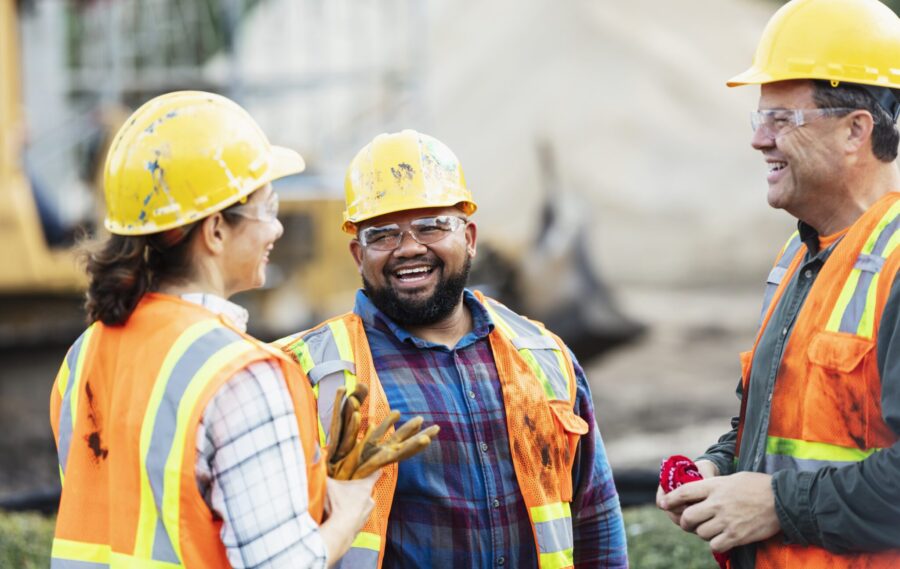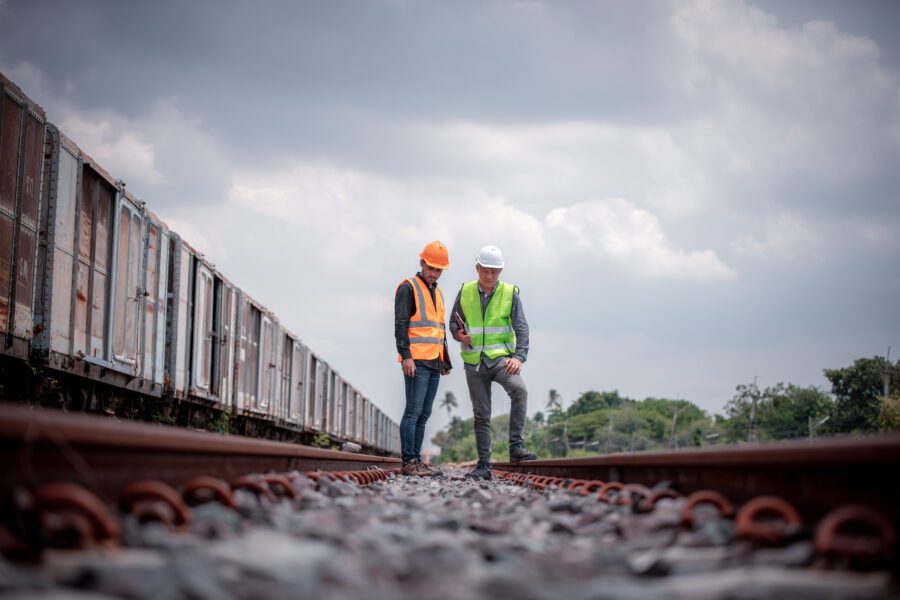If you’re a contractor with a construction crew doing work near a railroad, you may need railroad protective liability insurance. This specialized insurance policy is designed to cover risks associated with work on or near railroads. While a contractor may already have other construction insurance policies, railroad protective liability insurance fills the specific coverage gaps required by railroads.
What is railroad protective liability insurance?
According to the International Risk Management Institute, railroad protective liability insurance provides protection for liability that a railroad may incur due to the work of contractors on or near the railroad right-of-way.
It provides coverage for third-party bodily injury and property damage arising from the contractor’s work for which the railroad could be held liable. This specialized policy also covers physical damage to the railroad’s property and defense expenses that are outside of the policy limits. The policy’s declarations page will list the specific job location, and coverage is restricted to that job site. The railroad will be listed as the named insured. It’s important to note that completed operations are not covered by a railroad protective liability program.

Why isn’t your current liability insurance enough?
As a licensed contractor, you no doubt already have multiple insurance policies to cover your business, your workers and the specific construction projects you undertake. Your construction coverage likely includes:
- General liability insurance: State and municipality laws may require you to carry general liability insurance. Even if such coverage isn’t a legal requirement, you may decide you need it to protect your business against the legal costs associated with lawsuits alleging property damage or bodily injury.
- Builders’ risk insurance: This type of policy can cover the costs of repairing or replacing lost or damaged materials, fixtures and equipment on a job site. Covered perils generally include theft, vandalism and natural disasters.
- Professional liability insurance: This is errors and omissions coverage for contractors. It provides financial protection against allegations of professional errors.
- Workers’ compensation insurance: Typically required under state law, workers’ compensation covers costs associated with employee injuries, such as medical bills and lost wages.
- Commercial auto insurance: Construction work often involves trucks and other commercial vehicles, and commercial auto insurance helps to protect these assets.
Since you likely already have several insurance policies, you might wonder why you need even more insurance coverage. That’s because none of the above policies provide the protection that railroad operators require for work carried out near their rails.
In fact, general liability insurance for contractors typically excludes liability for work performed within 50 feet of a railroad, so railroad protective liability insurance is needed to fill this coverage gap.
A Railroad Protective Liability Policy Cannot Replace Other Policies
Railroad protective liability insurance can fill the coverage gaps left by other construction insurance policies, but it shouldn’t replace them. Contractors still need policies such as OCP liability insurance, professional liability insurance and the commercial insurance policies mentioned above in order to cover their own liability and to protect their projects, workers and bottom line.
In many cases, the railroad will require these and other insurance policies and may have requirements concerning coverage limits. Contractors may also face insurance requirements from state and local laws and contract provisions.
Railroads in the U.S.
Since railroads are a common feature in many parts of the U.S., contractors may encounter railroad protective liability insurance requirements when working on a number of projects.
According to the Association of American Railroads, more than 620 freight railroads operate on the U.S. freight rail network, which spans nearly 140,000 miles. Most of these freight railroads are privately owned and operated, meaning that the railroad operators typically own, build, maintain and pay for the railroad tracks themselves. The network consists of large Class I railroads as well as short-line and regional railroads.
Railroads play a critical role in the nation’s economy and transportation infrastructure. The Federal Highway Administration estimates that there were 19.3 billion tons of U.S. freight shipments in 2020 and that this number could rise to 25.1 billion by 2040.
Passenger trains also provide valuable services in the U.S. The National Railroad Passenger Corporation (better known as Amtrak) has 21,000 route miles and operates in 46 states, the District of Columbia and three Canadian provinces. Each day, Amtrak operates more than 300 trains.

Construction Hazards Near Railroads
It’s well known that construction on and around roads involves many hazards. Vehicles may be damaged due to uneven surfaces or unexpected materials on the road; construction workers may be seriously injured or killed if a vehicle strikes them. This is why work zones typically have reduced speed limits and higher penalties for violations. Similarly, construction on or near railroad tracks can also involve elevated hazards.
Construction work can damage rails or disrupt rail service. According to Trains, Seattle’s light rail service was disrupted for about two weeks after a construction crew broke through the roof of a tunnel at a rail station and forced the closure of one line of a double-track tunnel. According to NBC Chicago, Chicago’s rail service was forced to be temporarily suspended after a piece of construction equipment from an interstate fell onto the train tracks.
Trains can injure construction workers, sometimes fatally. Just as working on roads can lead to injuries caused by cars, working near railroad tracks can lead to construction workers being injured by trains. According to Engineering News-Record, a train fatally struck two construction workers who were working at night on a bridge near Philadelphia. A report from the National Transportation Safety Board determined that the engineer tried to stop to avoid a collision but was unable to do so in time.
Do you need railroad protective liability coverage?
Construction projects involve major risks, but the right insurance can help you manage your risks while meeting your legal and contractual obligations. If you’ve secured a contract for construction work near a railroad track, railroad protective liability insurance is likely a stipulation.
Higginbotham can help you secure the coverage package you need, including surety bonds and other required construction insurance policies, such as owners’ and contractors’ protective liability, builders’ risk insurance and wrap-up insurance. Talk to a construction insurance specialist today.





